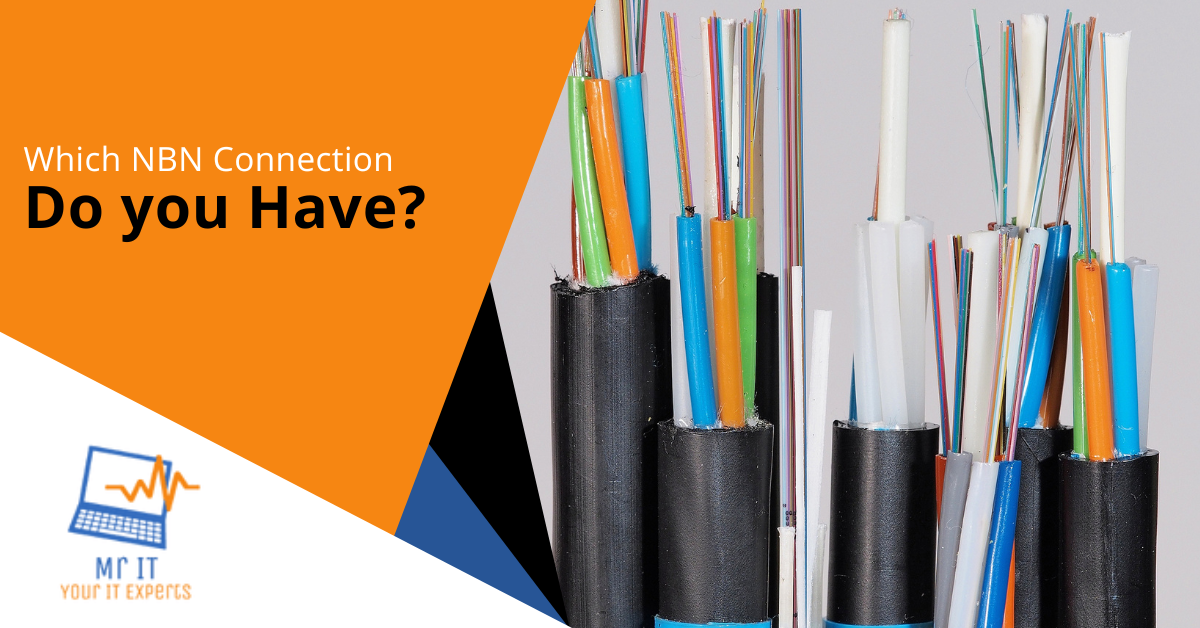The National Broadband Network (NBN) is an Australian government initiative aimed at providing fast and reliable internet services to homes and businesses across the country. The NBN offers a range of different connection types, including Fibre to the Premises (FTTP), Fibre to the Node (FTTN), Hybrid Fibre Coaxial (HFC), Fixed Wireless, and Satellite. Each connection type has its unique features and benefits, and it’s important to understand which connection type you have and how it works.
In this article, we will take a closer look at each of the NBN connection types and provide you with the information you need to identify which connection type you have.
Fibre the Premises (FTTP)
Fibre to the Premises (FTTP) is the most advanced and fastest NBN connection type available. FTTP connections use fibre optic cables to connect directly to the premises, providing speeds of up to 1Gbps. FTTP connections are available in select areas of Australia and are typically used in new housing developments and commercial buildings.
If you have an FTTP connection, you will have a small box called a Network Termination Device (NTD) installed on the wall of your premises. The NTD is where the fibre optic cable connects to your premises and provides an Ethernet port for you to connect your router.
Fibre to the Node (FTTN)
Fibre to the Node(FTTN) is a common NBN connection type that uses fibre optic cables to connect to a node in the street and then uses existing copper phone lines to connect to the premises. FTTN connections offer download speeds of up to 100Mbps and upload speeds of up to 40Mbps.
To identify if have an FTTN connection, you can look for a small box on the outside of your premises, called a Distribution Point Unit (DPU). The DPU connects the fibre optic cable to the copper phone line and provides a phone port for voice services. Inside your premises, you will have a modem that connects to the phone line and provides an Ethernet port for your router.
Hybrid Fibre Coaxial (HFC)
Hybrid Fibre Coaxial (HFC) is another NBN connection type that uses a combination of fibre optic cables and coaxial cables to connect to the premises. HFC connections are typically used in areas that already have existing cable TV infrastructure and offer download speeds of up to 100 Mbps and upload speeds of up to 40 Mbps.
If you have an HFC connection, you will have a small box called a Network Termination Device (NTD) installed on the wall of your premises. The NTD is where the fibre optic cable connects to your premises and provides a coaxial cable connection for your modem.
Fixed Wireless
Fixed Wireless is an NBN connection type that uses a wireless signal to connect to a nearby tower, which then connects to the internet via fibre optic cables. Fixed Wireless connections offer download speeds of up to 50 Mbps and upload speeds of up to 20 Mbps.
To identify if you have a Fixed Wireless connection, you can look for an antenna on the roof of your house. Inside, you will have a modem that connects to the antenna and provides an Ethernet port for your router.
Satellite
Satellite is the NBN connection type that is used in remote and rural areas where other connection types are not available. Satellite connections use a dish on the roof of the premises to connect to the NBN satellite, which then connects to the internet via a ground station. Satellite connections offer download speeds of up to 25 Mbps and upload speeds of up to 5 Mbps.
To identify if you have a Satellite connection, you can look for a dish on the roof of your premises.
Factors to Consider When Choosing an NBN Connection Type
Now that you know the different types of NBN connections available, the following factors should influence your decision an NBN connection type:
Speed
The speed of your internet connection is an important consideration when choosing an NBN connection type. FTTP and HFC connections offer the fastest download and upload speeds, while FTTN and Fixed Wireless connections are slower.
Availability
Not all NBN connection types are available in all areas. FTTP connections are only available in select areas, while Fixed Wireless and Satellite connections are typically used in rural and remote areas.
Cost
The cost of your NBN connection will depend on the connection type and your internet service provider. FTTP connections are typically the most expensive, while Fixed Wireless and Satellite connections are typically the cheapest.
Reliability
The reliability of your internet connection is an important consideration, particularly if you use the internet for business purposes. FTTP and HFC connections are generally more reliable than FTTN and Fixed Wireless connections.
Usage
The amount of data you use each month is an important consideration when choosing an NBN connection type. If you use a lot of data, you’ll want a connection type that offers high speeds and high data allowances.
Which NBN Connection Do You Have?
The National Broadband Network (NBN) is an Australian government initiative aimed at providing fast and reliable internet services to homes and businesses.
The NBN offers a range of different connection types, and it’s important to understand which connection type you have and how it works.
Fibre to the Premises (FTTP)
Fibre to the Node (FTTN)
Hybrid Fibre Coaxial (HFC)
Fixed Wireless
Satellite
Factors to Consider When Choosing an NBN Connection Type
The following factors should influence your decision when choosing an NBN connection type:
Speed
Availability
Cost
Reliability
Usage
At Mr IT, we offer a range of NBN connection types and plans to suit the needs of residential and small business customers. Our team can provide you with expert advice and assistance to help you choose the best connection type and plan for your preferences.
Contact us today to speak with one of our friendly team members and learn more about our services.
